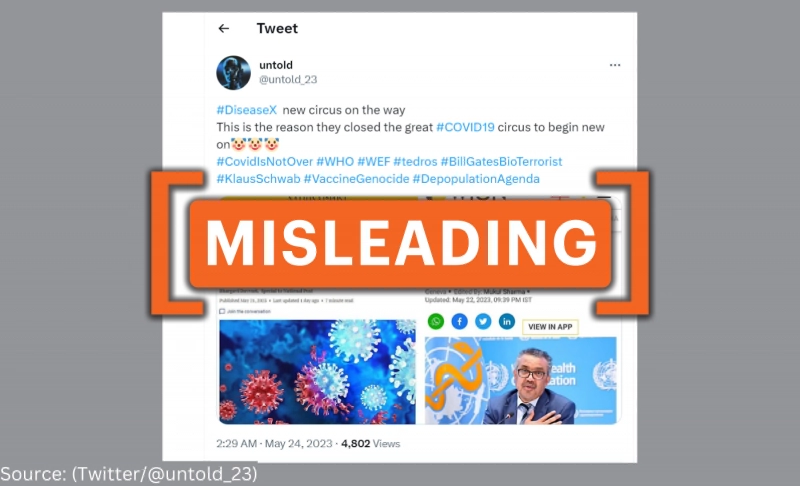By: Nabeela Khan
May 31 2023

'Disease X' is a term to represent the next unknown disease and has been on the list of WHO's priority diseases since 2018.
Context
While delivering his report at the 76th World Health Assembly on May 22, the World Health Organization (WHO) director-general Dr. Tedros Adhanom Ghebreyesus warned against another pandemic and said that countries must prepare for other threats.
Since then, Twitter has been abuzz with posts claiming a certain "Disease X is coming." It's imperative to note that WHO chief Ghebreyesus didn't use the term 'Disease X' during his address but said, "The threat of another variant emerging that causes new surges of disease and death remains...we must be ready." Following this, news articles reporting on Tedros' speech explained 'emerging variants' and used the term 'Disease X' to highlight that WHO has identified "priority" contagious diseases. These reports were then taken out of context and shared on social media platforms, adding to the confusion and panic.
However, 'Disease X' is a term used to represent the next unknown disease, and it was included on the list of priority diseases in 2018 for research and development purpose by WHO. To understand this better, we reached out to WHO and other experts to understand what exactly is 'Disease X' and whether or not it can be predicted.
What's 'Disease X'?
Speaking to Logically Facts, Ashoka University's physics and biology department's dean and professor Gautam Menon said, "There is simply no way to predict whether a pandemic disease may occur this year or in the next decade or even in the next century. What we can do is to prepare reasonably for this eventuality, just as we prepare for other things that may or may not happen in the future."
"People should not worry about it because no such disease exists. It is a placeholder name that is intended to help us prepare better for a pandemic in the future," he added.
He further explained that it makes sense for international agencies like WHO to be prepared. "It's their job to ensure that we are all prepared for any eventuality that might arise, however, even those that might not have a substantial probability of actually happening."
We also reached out to WHO, and they directed us to a link "Prioritizing diseases for research and development in emergency contexts" and said to note that "Disease X represents the knowledge that a serious international epidemic could be caused by a pathogen currently unknown to cause human disease. The R&D Blueprint explicitly seeks to enable early cross-cutting R&D preparedness relevant for an unknown Disease X."
WHO first published a list of pathogens that could cause a 'deadly pandemic' in 2017. Currently, the list includes COVID-19, Ebola virus disease, Marburg virus disease, Lassa fever, Middle East respiratory syndrome (MERS), Severe Acute Respiratory Syndrome (SARS), Nipah, and Zika, with its latest entry being Disease X in 2018.
The Verdict
Disease X is not real but a body of knowledge or a placeholder name about pathogens that may cause potential diseases. This body of knowledge helped in preparations for a response to COVID-19. It is easy to construct misleading claims around a 'Disease X' because the WHO is still researching on it.